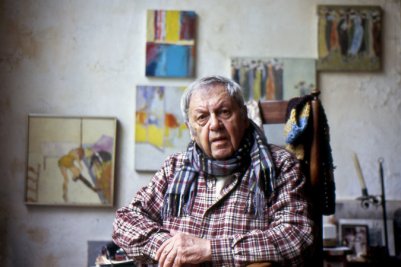“Leiter is a rare artist, one whose vision is so encompassing, so refined, so in touch with a certain lyrical undertone, that his best photographs occasionally seem literally to transcend the medium.” – Jane Livingston, The New York School
Saul Leiter sought neither fame nor commercial success, despite his immense talent for photography. In fact, he had always found it comfortable to be ignored. Yet three years later after his death in 2013, he is just beginning to acquire significant mainstream recognition for his pioneering role in the emergence of colour photography.

I went along to The Photographers’ Gallery unfamiliar with Leiter’s work, but left pleasantly surprised, and a converted fan.
Saul Leiter (1923-2013) moved to New York City to become a painter. But like many artists, the camera became an extension of his arm and mind. It provided him with an alternative way of seeing, of framing events and interpreting reality.
As early as 1946, and before the new colour photography school of the 1970’s, which comprised photographers such as William Eggleston and Stephen Shore; Leiter was using Kodachrome colour slide film for his free artistic shots, despite it being loathed by artists of the day.
In his photographs, the genres of street life, portraiture, still lifes, fashion and architectural photography meld. Leiter comes across his themes, such as shop windows, passers-by, cars, signs and (a recurrent motif) umbrellas. The lack of clear detail, the blurring of movement and the reduction in depth of field, the compensation for or deliberate avoidance of the necessary light as well as the alienation caused by photographing through windows and by reflections all blend to create a language of color fueled by a semi-real, semi-abstract urban space.
For me personally as an artist, what struck a chord the most was that unlike other photographers of the time such as Robert Frank or William Klein; Leiter was able to transform seemingly ordinary street scenes into visual poetry, and this came from his eloquent handling of colour. Leiter stretched the boundaries of photography with images that were frequently abstract and painterly. He had an uncanny ability to pull complex situations out of everyday life, images that echo the abstraction of painting and yet, simultaneously, clearly depict the world.